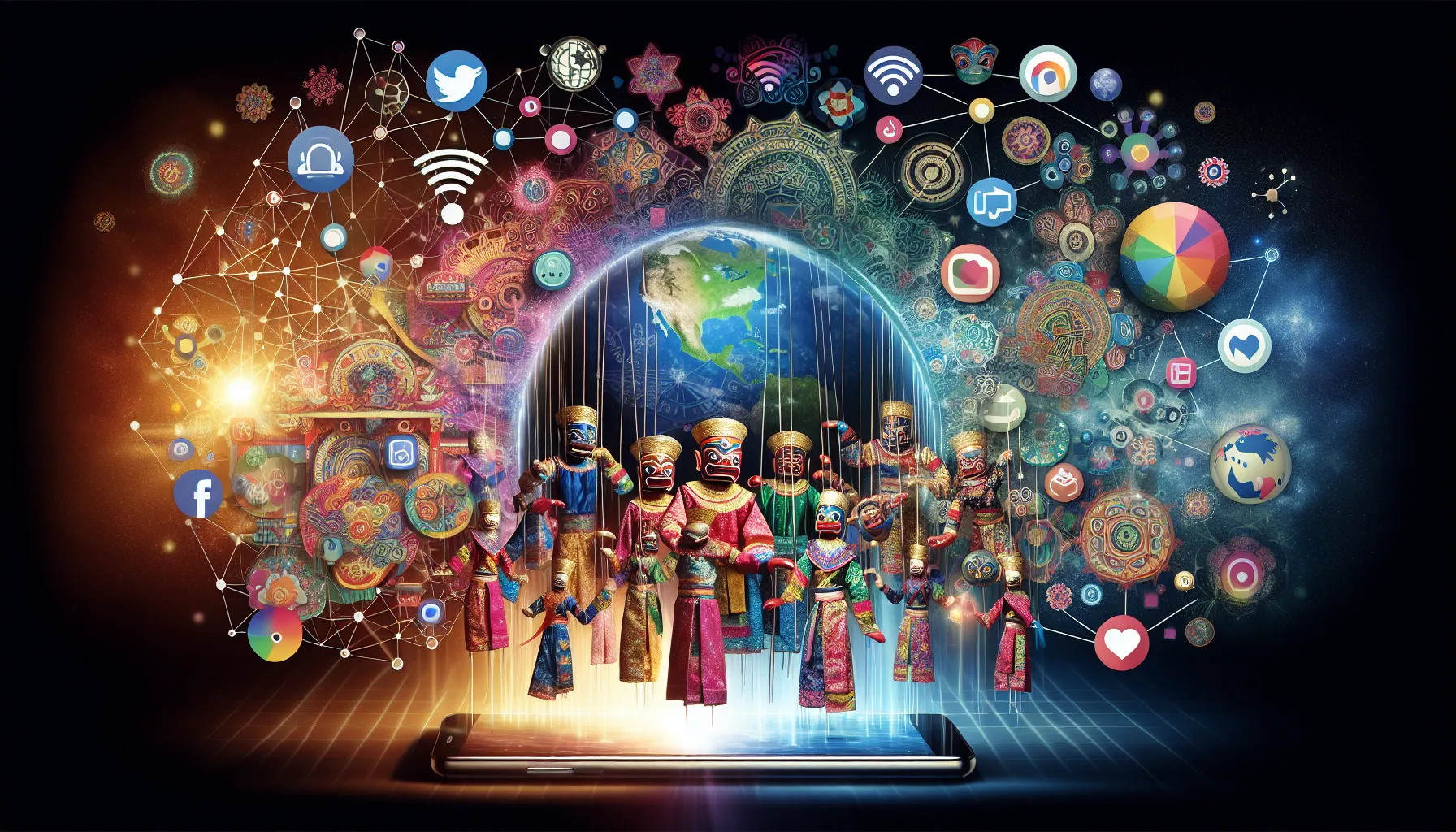Globalization has become an increasingly significant topic in IELTS Writing Task 2 essays, particularly its influence on traditional art forms. This theme reflects the growing interest in cultural preservation amidst rapid global changes. Based on recent trends, we can expect to see more questions exploring this subject in future IELTS exams. Let’s examine a relevant question and provide sample essays for different band scores.
Nội dung bài viết
Analyzing the Question
Some people think that globalization is harmful to local cultures and traditional art forms. Others believe it offers new opportunities for cultural exchange and artistic development. Discuss both views and give your own opinion.
This question requires candidates to:
- Discuss the negative impacts of globalization on local cultures and traditional art forms
- Explore the positive aspects of globalization in terms of cultural exchange and artistic development
- Present a balanced argument and provide a personal opinion
Sample Essay for Band 8-9
Globalization has undeniably transformed the landscape of cultural expression worldwide, sparking a debate about its effects on local traditions and art forms. While some argue that this global interconnectedness poses a threat to cultural heritage, others see it as a catalyst for artistic innovation and cross-cultural understanding. In my opinion, while globalization does present challenges to traditional arts, its potential for fostering cultural diversity and creativity outweighs the drawbacks.
Critics of globalization often point to the homogenization of culture as a primary concern. They argue that the influx of Western pop culture and mass-produced goods can overshadow local artistic traditions, leading to their gradual erosion. For instance, traditional Vietnamese water puppet theaters have seen declining audiences as young people increasingly gravitate towards Hollywood blockbusters and online entertainment. This shift not only affects the artists’ livelihoods but also threatens the transmission of cultural knowledge to future generations.
However, proponents of globalization highlight its role in creating new avenues for artistic expression and cultural exchange. The internet and social media platforms have provided unprecedented opportunities for artists from diverse backgrounds to showcase their work to a global audience. For example, Vietnamese artists can now easily share their traditional paintings or music online, reaching art enthusiasts worldwide and potentially attracting international collaborations. This exposure not only helps preserve traditional art forms but also allows them to evolve and find new relevance in a contemporary context.
Moreover, globalization has facilitated the fusion of different artistic traditions, leading to innovative and exciting new forms of expression. The blending of traditional Vietnamese instruments with Western musical styles, for instance, has given rise to unique genres that appeal to both local and international audiences. This cultural hybridization demonstrates how globalization can enrich rather than diminish artistic diversity.
In my view, while the concerns about cultural erosion are valid, the benefits of globalization for artistic development are more significant. The key lies in striking a balance between preserving cultural heritage and embracing new opportunities for growth and exchange. Governments and cultural institutions should implement policies that support traditional artists while also encouraging them to engage with global audiences and contemporary practices. By doing so, we can ensure that traditional art forms not only survive but thrive in an interconnected world.
In conclusion, globalization’s impact on traditional art forms is complex and multifaceted. While it poses challenges to cultural preservation, it also offers unprecedented opportunities for artistic growth and cross-cultural understanding. By embracing these opportunities thoughtfully, we can harness the power of globalization to celebrate and revitalize traditional arts in the modern era.
(Word count: 417)
 Globalization and Traditional Art
Globalization and Traditional Art
Analysis of Band 8-9 Essay
This essay demonstrates excellent qualities that justify a high band score:
-
Task Response: The essay fully addresses all parts of the task, providing a balanced discussion of both viewpoints and a clear personal opinion.
-
Coherence and Cohesion: The essay is well-organized with clear paragraphing and effective use of cohesive devices. Ideas flow logically from one paragraph to the next.
-
Lexical Resource: A wide range of vocabulary is used accurately and appropriately. Complex phrases like “homogenization of culture” and “cultural hybridization” demonstrate sophisticated language use.
-
Grammatical Range and Accuracy: The essay showcases a variety of complex sentence structures with minimal errors. It uses conditionals, relative clauses, and other advanced grammatical constructions effectively.
-
Examples: The essay provides specific, relevant examples (Vietnamese water puppet theaters, online sharing of traditional art) to support its arguments.
-
Critical Thinking: The essay demonstrates nuanced thinking by acknowledging the complexity of the issue and suggesting a balanced approach to addressing challenges.
Sample Essay for Band 6-7
Globalization has changed many things in our world, including traditional art forms. Some people think it’s bad for local cultures, while others see new chances for artists. I will discuss both sides and give my opinion.
On the one hand, globalization can harm traditional art. When foreign cultures become popular, local traditions might be forgotten. For example, in Vietnam, young people often prefer watching Hollywood movies instead of traditional theater. This means fewer people are interested in old art forms, and they might disappear. Also, mass-produced goods from other countries can replace handmade local crafts, making it hard for traditional artists to earn money.
On the other hand, globalization can help artists in new ways. The internet lets artists show their work to people all over the world. A Vietnamese painter can now sell their art online to customers in America or Europe. This helps them make more money and keeps traditional art alive. Globalization also allows artists to learn new techniques from other cultures. They can mix these with their own traditions to create new and interesting art.
In my opinion, globalization has both good and bad effects on traditional art. While some old art forms might be lost, new and exciting forms of art can be created. I think it’s important to try to keep traditional art alive, but also to let it change and grow with the times.
To conclude, globalization affects traditional art in different ways. It can be a threat, but it also offers new opportunities. The challenge is to find a balance between preserving old traditions and embracing new ideas.
(Word count: 275)
Analysis of Band 6-7 Essay
This essay demonstrates qualities that justify a band score of 6-7:
-
Task Response: The essay addresses all parts of the task, discussing both viewpoints and providing a personal opinion. However, the ideas could be more fully developed.
-
Coherence and Cohesion: The essay has a clear structure with introduction, body paragraphs, and conclusion. Basic cohesive devices are used, but more sophisticated linking could improve the flow.
-
Lexical Resource: The vocabulary is adequate for the task, with some attempt at using less common words. However, the range is more limited compared to the band 8-9 essay.
-
Grammatical Range and Accuracy: The essay uses a mix of simple and complex sentences with generally good control. There are some errors, but they do not impede communication.
-
Examples: The essay provides some examples, but they are less specific and developed compared to the higher band essay.
-
Critical Thinking: The essay shows some analysis of the issue, but the ideas could be explored in more depth.
Key Vocabulary to Remember
-
Globalization (noun) /ˌɡləʊbəlaɪˈzeɪʃən/ – the process by which businesses or other organizations develop international influence or start operating on an international scale
-
Cultural heritage (noun phrase) /ˈkʌltʃərəl ˈherɪtɪdʒ/ – the legacy of physical artifacts and intangible attributes of a group or society
-
Homogenization (noun) /həˌmɒdʒənaɪˈzeɪʃən/ – the process of making things uniform or similar
-
Erosion (noun) /ɪˈrəʊʒən/ – the gradual destruction or diminution of something
-
Hybridization (noun) /ˌhaɪbrɪdaɪˈzeɪʃən/ – the process of combining different elements to create something new
-
Innovation (noun) /ˌɪnəˈveɪʃən/ – a new method, idea, product, etc.
-
Preserve (verb) /prɪˈzɜːv/ – maintain (something) in its original or existing state
-
Revitalize (verb) /ˌriːˈvaɪtəlaɪz/ – imbue (something) with new life and vitality
-
Cross-cultural (adjective) /krɒs ˈkʌltʃərəl/ – relating to different cultures or comparison between them
-
Interconnected (adjective) /ˌɪntəkəˈnektɪd/ – mutually connected or interrelated
Conclusion
The impact of globalization on traditional art forms is a complex and relevant topic for IELTS Writing Task 2. By understanding the key arguments and using appropriate vocabulary and structures, you can craft a well-balanced essay that demonstrates your critical thinking and language skills.
To further prepare, consider practicing with similar topics such as:
- The effects of globalization on local languages
- The role of technology in preserving cultural heritage
- The balance between modernization and tradition in developing countries
Remember to analyze the question carefully, plan your essay structure, and use specific examples to support your arguments. Feel free to share your practice essays in the comments section for feedback and discussion. This active engagement will help you improve your writing skills and prepare effectively for the IELTS exam.


